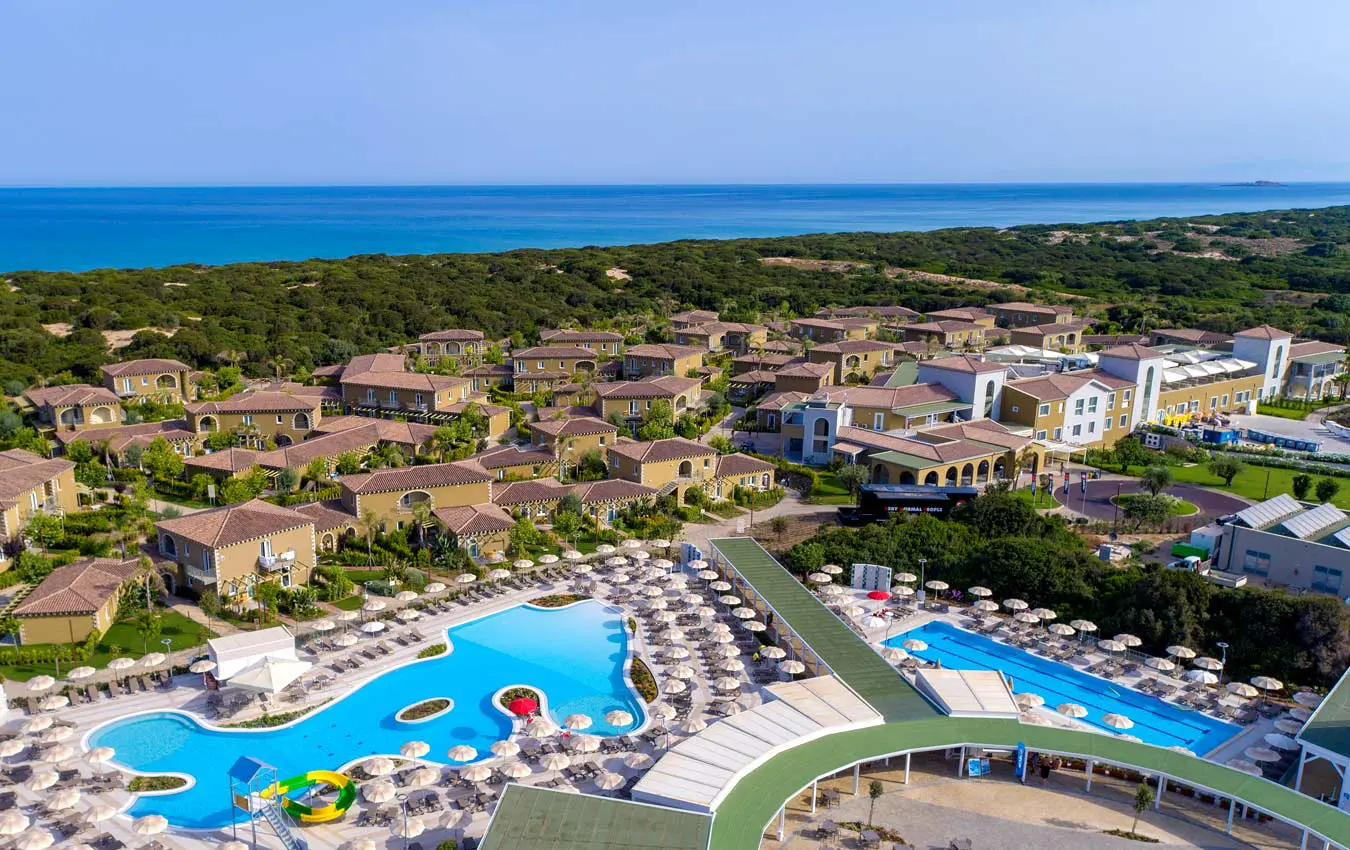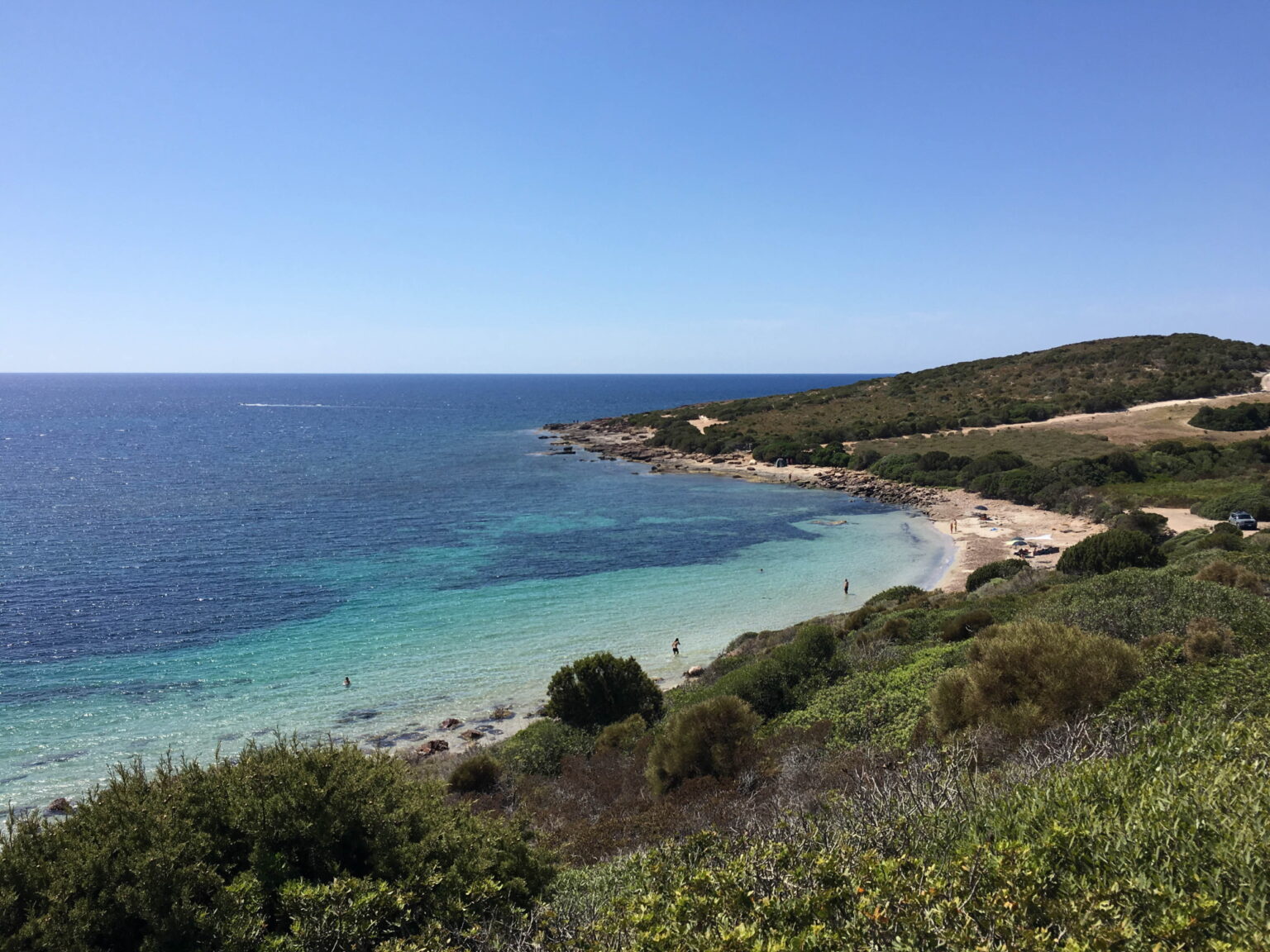

Located in Badesi, the northern part of the island near Gallura, the resort is surrounded by unspoiled wilderness, golden sand dunes, and a crystal-clear sea.


Sardinia, an island in the heart of the Mediterranean, is known for its unspoiled wilderness and age-old traditions. With white sand beaches, hidden coves, and crystal-clear water, the island and its breathtaking coastlines captivate visitors from all over the world.
But Sardinia is so much more than the sea–it’s a kaleidoscope of landscapes ranging from wild, rocky mountains to plains studded with centuries-old olive trees. Ancient villages, Nuragic ruins, artisan crafts, and culinary traditions render the land unique and fascinating–get ready to explore it.
Villasimius is home to south Sardinia’s most beautiful, well-equipped seaside. Admire the old fortress, a late 17th-century star-shaped military coastal defence structure. The Municipality of Villasimius lodges the Visual Arts Experimentation International Centre. Founded in 1982, the centre is home to numerous artworks born from a collaboration with several European artists. Located on Sardinia’s southwest coast, Villasimius, is close to several shipwrecks. The nearby Protected Marine Area stretches from Capo Carbonara to Capo Boi to the island of Serpentara. Although frequented by divers in the summer, the seabed and vegetation remain biologically intact, and host varied tropical fish that biologists have studied and observed for the past two decades. Admire beautiful porcelain shells formerly known as Venus of Cyprus and various fish species, sea turtles, and dolphins.
The monuments of Quartu S. Elena, a town just a few kilometres from the resort, reflect centuries of history. See the 13th-century church of the Capuchins; Piazza Azuni, whose small Romanesque column marks the town centre; and the neoclassical Sant’Elena parish church embellished with various Baroque details from the 17th to 18th centuries.
Cagliari’s fascinating architectural and historical heritage includes museums, picture galleries, stately palaces, and picturesque narrow streets with artisan workshops.
From Cagliari, take Strada Statale 131 Carlo Felice and follow the signs to Torralba in the heart of north-central Sardinia. The route is studded, with the remains of 30 nuraghi, mysterious monolithic Bronze Age structures, and 10 giant tombs. The most intriguing archaeological site is undoubtedly the Santu Antine Nuraghe palace complex, which prompted the opening of Torralba’s Nuraghi Valley of Logudoro-Mieliu museum. Also, don’t miss the history-rich village of Barumini. In Cagliari, two tourist trains offer a scenic ride with breathtaking city vantage points.
From Cagliari, hop on Strada Statale 131. Drive for about 60 kilometres until you reach Tuili, a small agro-pastoral village with a quaint historic centre. Continue to the Giara plateau to reach Sa Jara Park, one of Europe’s rare examples of unspoiled nature. Here, you can observe the “giara” horses and extraordinary flora. Follow the signs for Barumini to arrive at Sa Nuraxi Nuragic village. Composed of hundreds of huts that date back to 1500 BC, Sa Nuraxi is a UNESCO World Heritage site.
Take a panoramic tour of San Pietro Island to admire its beautiful coves and swim in crystal-clear water. A variety of environments give the oasis a particularly wild appearance–discover them during a guided tour or educational activity. The town of Carloforte is a must-visit. Founded in the 1700s by Ligurian fishermen, the island still preserves their dialect, traditions, and culture.
The pearl of southern Sardinia, between enchanting beaches and sunken treasures
Villasimius is home to south Sardinia’s most beautiful, well-equipped seaside. Admire the old fortress, a late 17th-century star-shaped military coastal defence structure. The Municipality of Villasimius lodges the Visual Arts Experimentation International Centre. Founded in 1982, the centre is home to numerous artworks born from a collaboration with several European artists. Located on Sardinia’s southwest coast, Villasimius, is close to several shipwrecks. The nearby Protected Marine Area stretches from Capo Carbonara to Capo Boi to the island of Serpentara. Although frequented by divers in the summer, the seabed and vegetation remain biologically intact, and host varied tropical fish that biologists have studied and observed for the past two decades. Admire beautiful porcelain shells formerly known as Venus of Cyprus and various fish species, sea turtles, and dolphins.
A city rich in history and authenticity
The monuments of Quartu S. Elena, a town just a few kilometres from the resort, reflect centuries of history. See the 13th-century church of the Capuchins; Piazza Azuni, whose small Romanesque column marks the town centre; and the neoclassical Sant’Elena parish church embellished with various Baroque details from the 17th to 18th centuries.
Sardinia’s seaside cradle of history
Cagliari’s fascinating architectural and historical heritage includes museums, picture galleries, stately palaces, and picturesque narrow streets with artisan workshops.
From Cagliari to Sassari: an evocative adventure between nature and archaeology
From Cagliari, take Strada Statale 131 Carlo Felice and follow the signs to Torralba in the heart of north-central Sardinia. The route is studded, with the remains of 30 nuraghi, mysterious monolithic Bronze Age structures, and 10 giant tombs. The most intriguing archaeological site is undoubtedly the Santu Antine Nuraghe palace complex, which prompted the opening of Torralba’s Nuraghi Valley of Logudoro-Mieliu museum. Also, don’t miss the history-rich village of Barumini. In Cagliari, two tourist trains offer a scenic ride with breathtaking city vantage points.
Immerse yourself in Sardinia’s authentic history
From Cagliari, hop on Strada Statale 131. Drive for about 60 kilometres until you reach Tuili, a small agro-pastoral village with a quaint historic centre. Continue to the Giara plateau to reach Sa Jara Park, one of Europe’s rare examples of unspoiled nature. Here, you can observe the “giara” horses and extraordinary flora. Follow the signs for Barumini to arrive at Sa Nuraxi Nuragic village. Composed of hundreds of huts that date back to 1500 BC, Sa Nuraxi is a UNESCO World Heritage site.
A Sardinian jewel engulfed by crystal-clear water
Take a panoramic tour of San Pietro Island to admire its beautiful coves and swim in crystal-clear water. A variety of environments give the oasis a particularly wild appearance–discover them during a guided tour or educational activity. The town of Carloforte is a must-visit. Founded in the 1700s by Ligurian fishermen, the island still preserves their dialect, traditions, and culture.
Enter the world of Bluserena. Sign up to receive email updates
on news, stories, and great holiday deals.